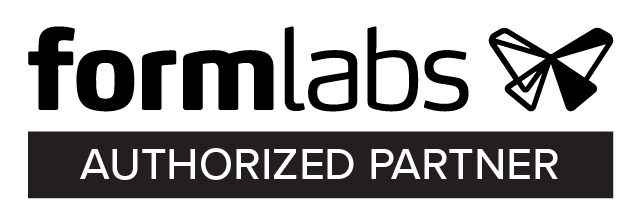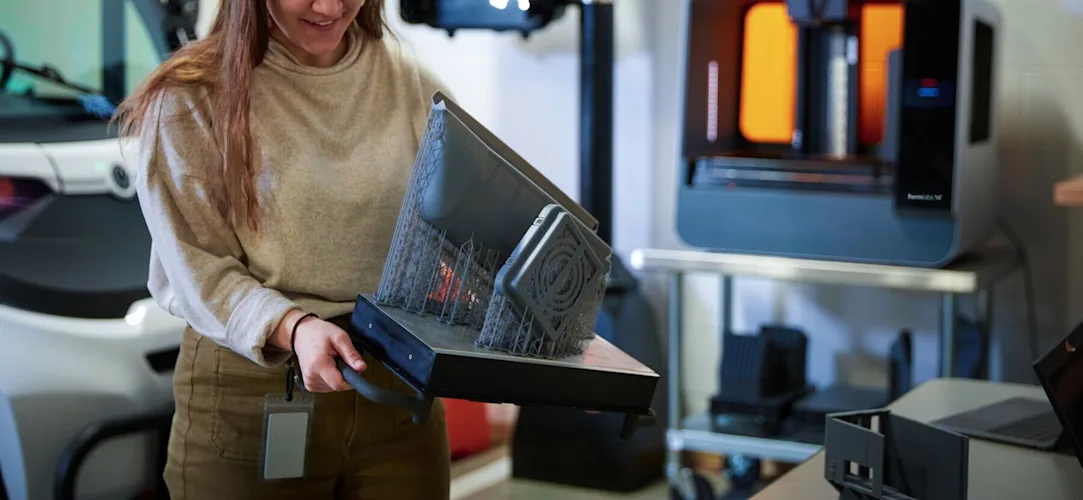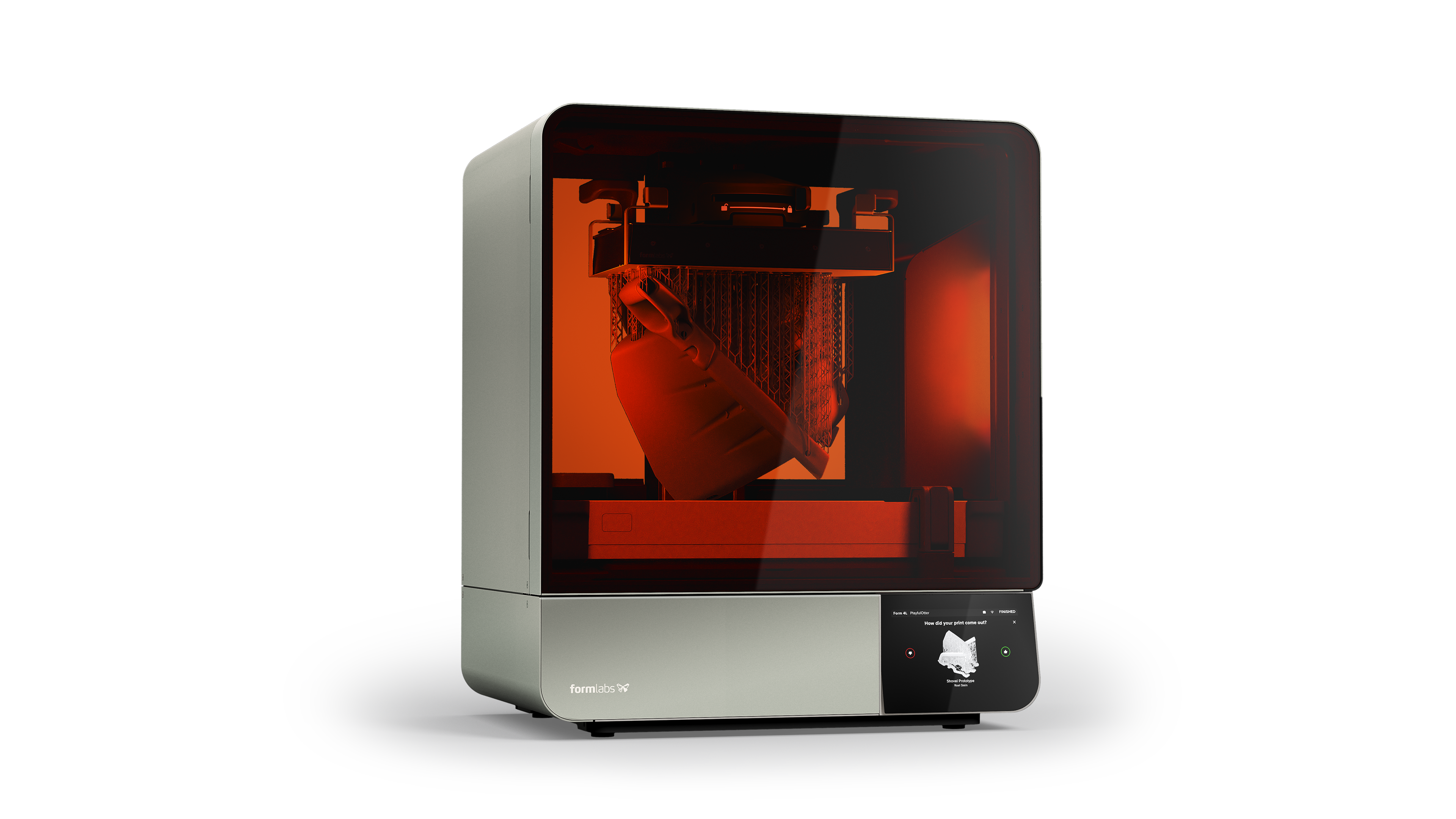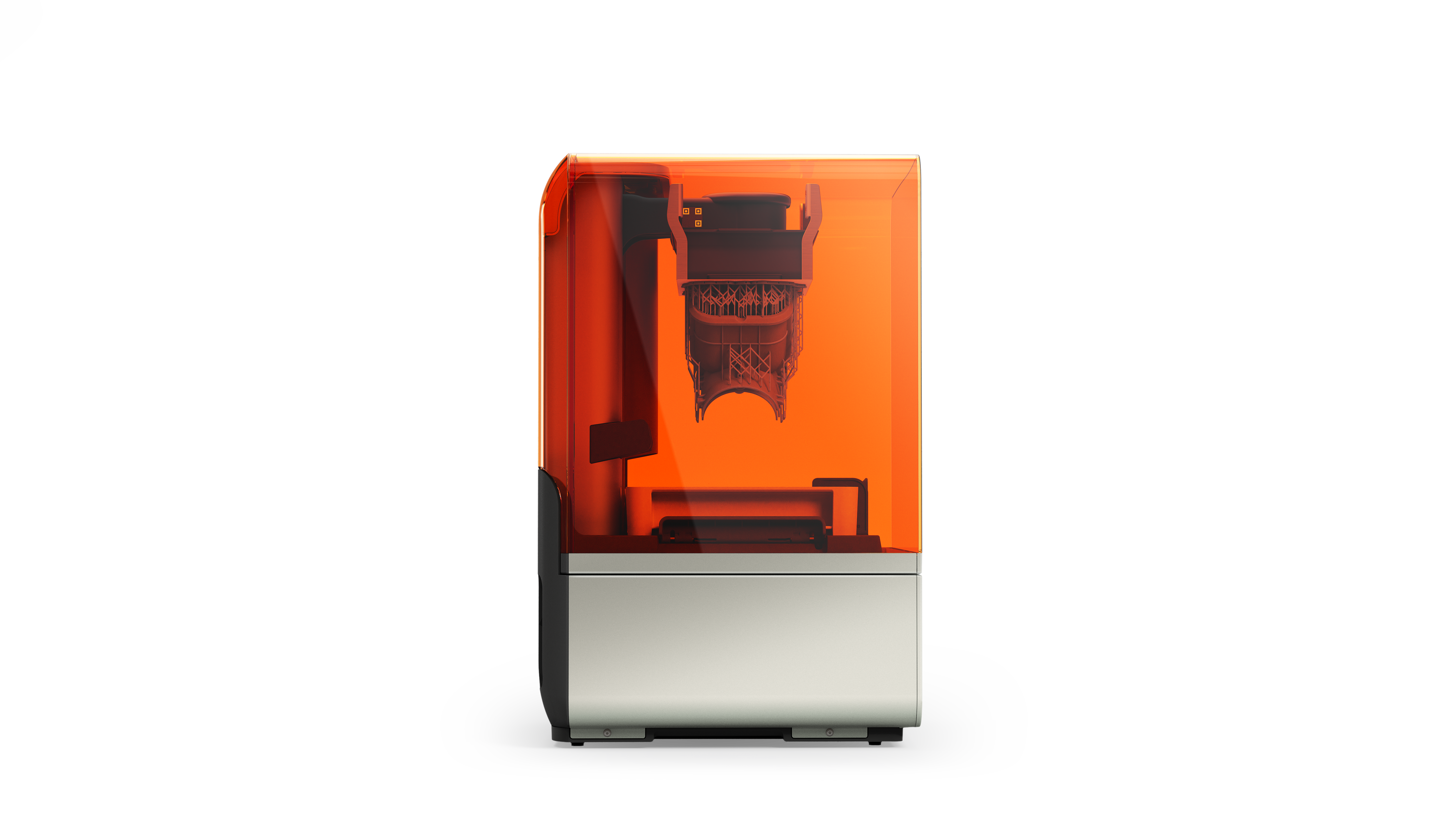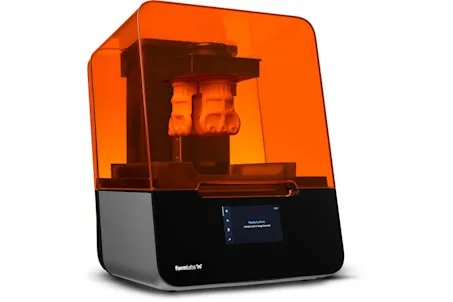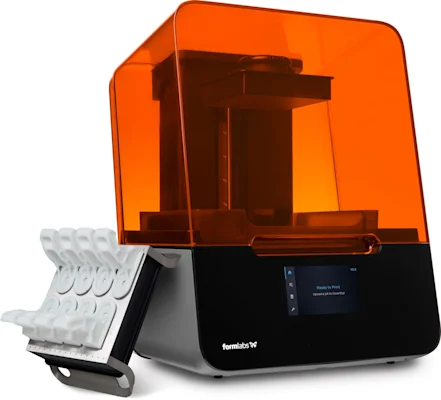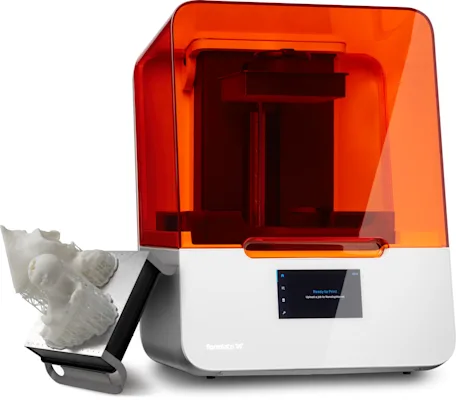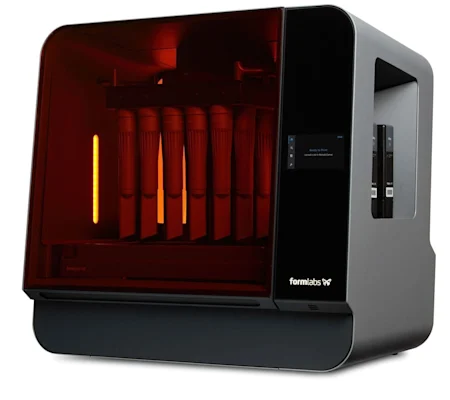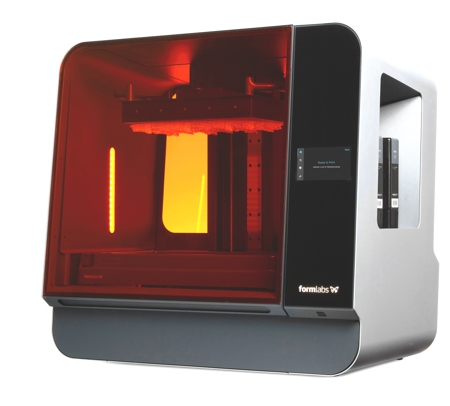Formlabs SLA 3D Printer Range
Originally starting with the Form 1, there is now a series of Formlabs Form 3 printers. Each of these SLA machines offers specific features regarding build volume, resolution, build platform or finish kit, offering obvious options to upgrade. They are all accessorised with the Form Cure and Form Wash post-processing systems.
The print process is initiated via their Preform software via cable-connect or wi-fi, consistently producing high-quality parts with a perfect finish. Formlabs material options span from rigid to high temperature, with their ability to produce repeatable prints making them highly suitable for printing industrial quality parts.
Formlabs’ Pro Service Plan ensures their SLA printers are ready to go on every project, whether the application is in engineering and product design, manufacturing, dental, education, healthcare, entertainment or the jewellery industry.
SLA
Since its launch in the 1980’s, Stereolithography (SLA) 3D printing has undergone many changes. Originally the systems were quite expensive and required specific environments for installation, not to mention needing highly skilled operatives. Over the past 30 years, the technology has advanced and is now available in desktop form without sacrificing the integrity of the parts the 3D printers build. Along with an impressive range of materials, the SLA 3D printer is attracting more attention as the purchase price makes them more affordable within key markets.
Featuring the ability to produce highly accurate, isotropic, watertight parts in a wide range of advanced materials, the additional fine feature detail and smooth surface finish make the SLA 3D printer a key component in many design environments.
What is the SLA Printing Process
Using a light source – projector or laser power (known as Digital Light Processing)– liquid resin is cured in a vat to become hardened plastic. The finished part features high resolution, accuracy and smooth finish, making SLA arguably the best additive manufacturing technology of all.
It is not just the machine itself that has developed exponentially over the years but the materials have too. Manufacturers have created innovative formulations where optical, mechanical and thermal properties are addressed, enabling the finished part to match those of standard, engineering, and industrial thermoplastics.
SLA Software
Enabling the model to be designed and then exported in a 3D printable format, usually as an STL or OBJ file, the model is sliced into layers, matching the process of the build. Support points are automatically calculated and then all the build data and material settings are sent to the printer.
The system operator confirms the setup configuration is correct and the print begins. It is usual for the 3D printer to run unattended, especially if it uses a cartridge system where the material is refilled automatically as required. Once the build is finished, the part is removed, rinsed with IPA or TPM which removes the uncured resin, and models that require enhanced strength and stability are post-cured with UV light.
The supports are removed and the touchpoints lightly sanded, resulting in the exact model originally designed. This can now be machined, primed or painted if required.
SLA Surface Features
The SLA printing process achieves smooth surface finishes that are comparable with those achieved through traditional manufacturing processes and is considered by many to be the gold standard. Post-processing time for parts to be sanded, polished, and painted is significantly reduced due to its superior level of surface quality.
SLA digital fabrication technology is able to build parts that are completely watertight, making it perfect for engineering or manufacturing applications where the part is required to provide controlled or predictable flow for air or water. Validation of kitchen appliances or biomedical research designs are typical uses for this feature.
Low Force Stereolithography
An advanced form of SLA has now arrived, Low Force Stereolithography (LFS). Drastically reducing the force applied to parts while being printed, incorporates a flexible tank and illumination to achieve superior results. The low force means the build touchpoints of the support structure is less evident. Requiring only minimal post-process preparation, the opportunity for advanced materials to be developed for production-ready applications comes a step closer.
Advent – for all your Formlabs 3D printing needs
We don’t just specialise in SLA printers. As the UK’s only Formlabs dedicated reseller we can help you with the full Formlabs range of printers, including their selective laser sintering offerings, along with their full range of peripherals, consumables, and replacement parts. So if you’re considering 3D printing, you can try it out for free. Get a free part printed free sample to see how great the print quality is and get a sense of how much time and money and time it will save you. We operate one of the largest 3D printing bureaus in the UK, so if you are thinking of buying a 3D printer, contact us to try before you buy.
